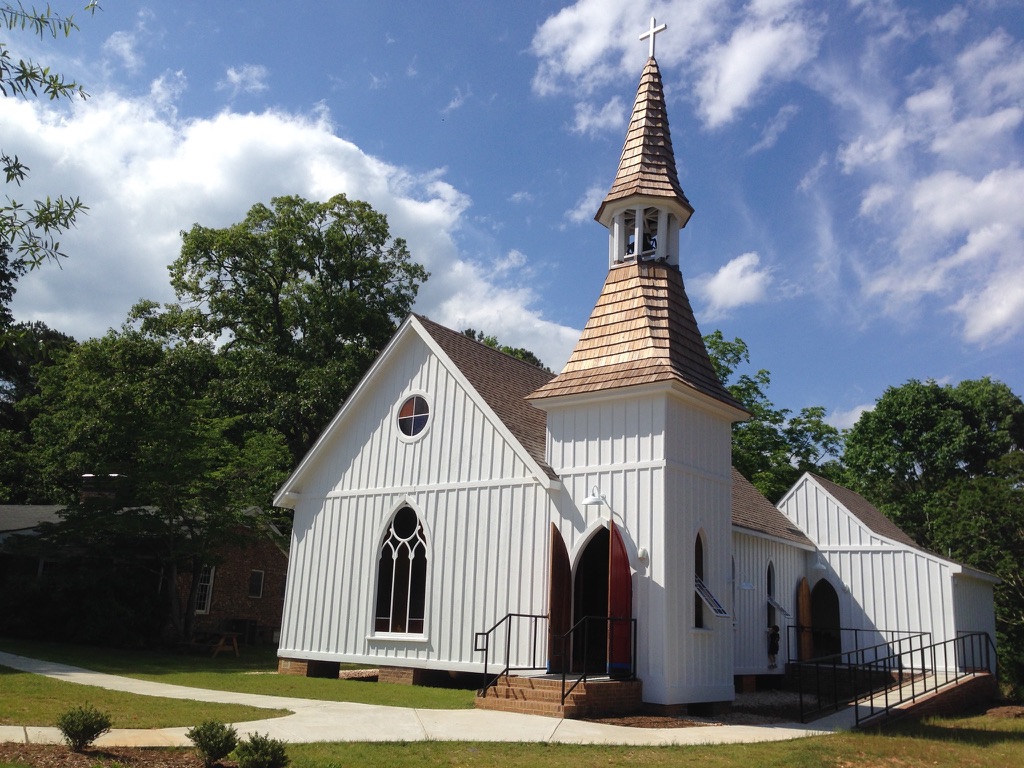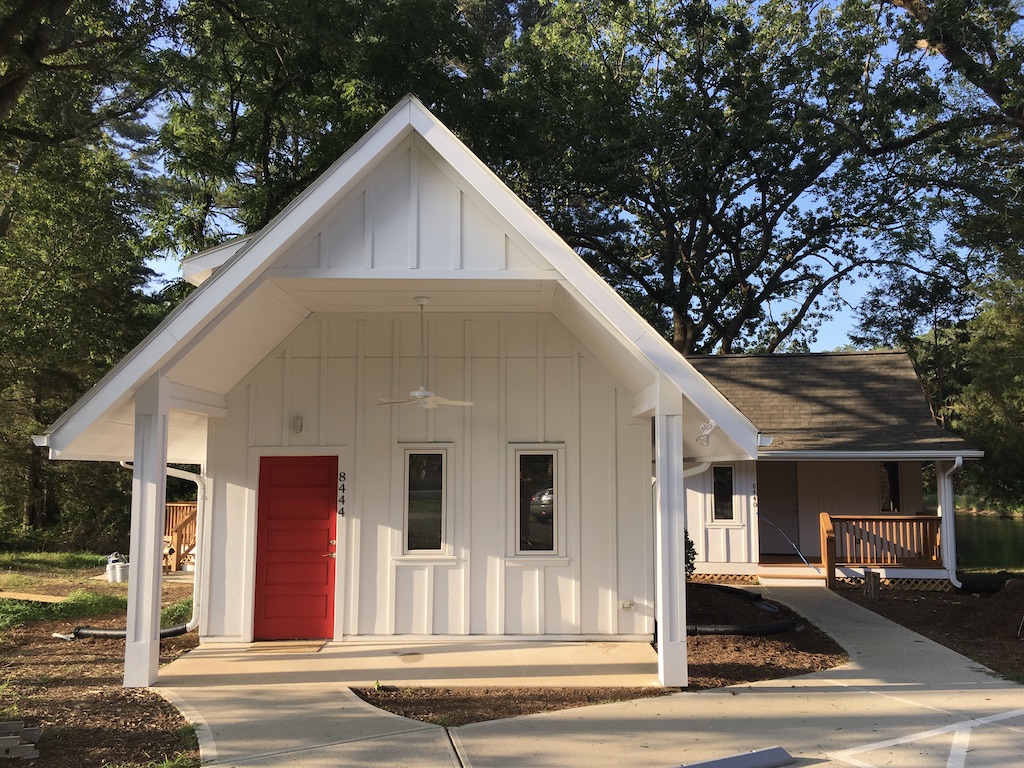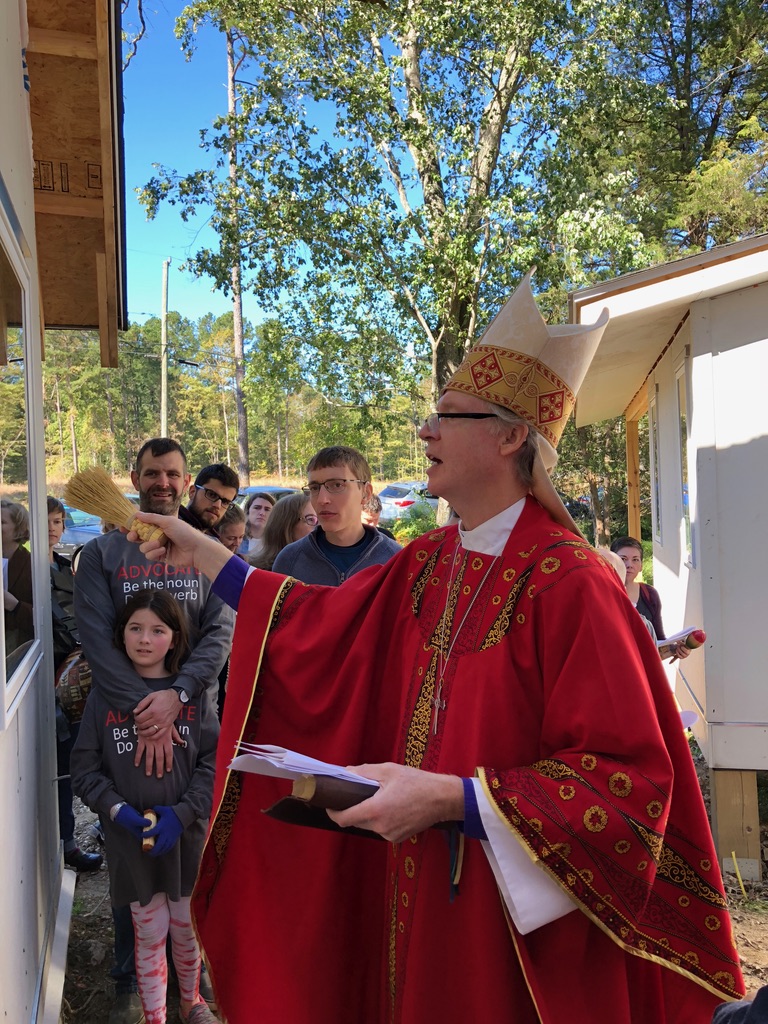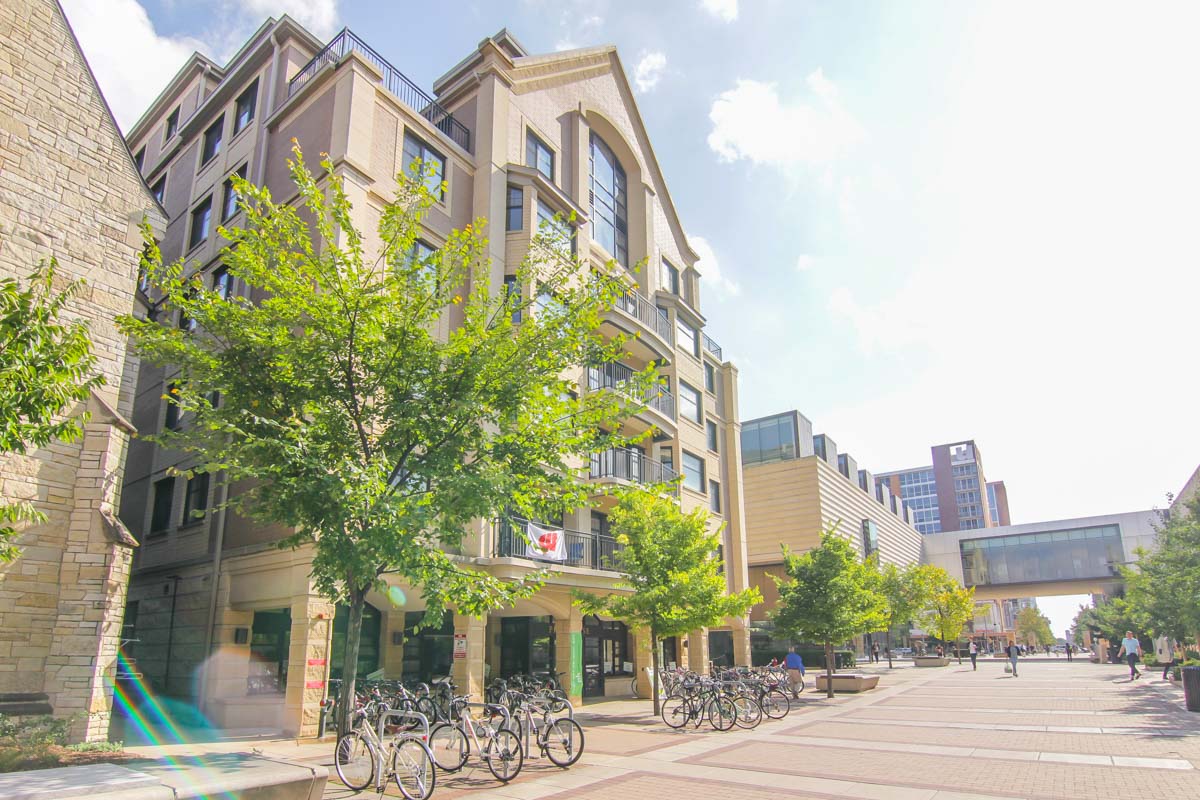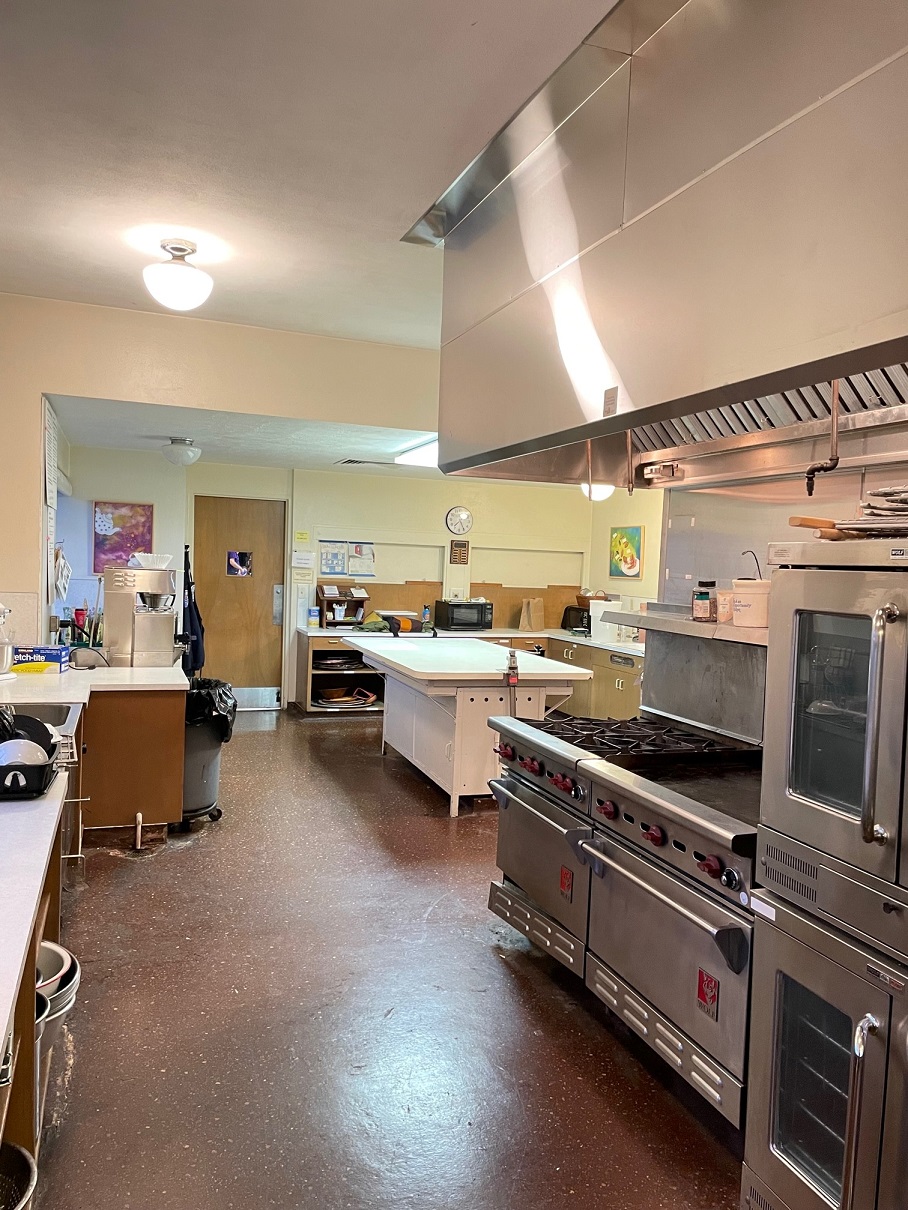
Rochelle Stackhouse

David Bowers
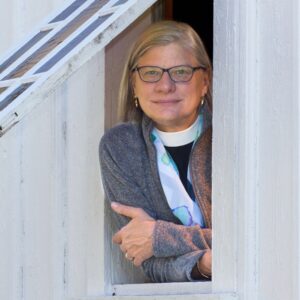
Lisa Fischbeck
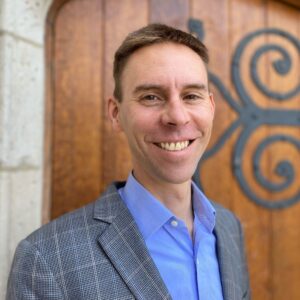
Mark Elsdon
In August 2023, Rochelle (Shelly) Stackhouse, Senior Director of Programs at Partners for Sacred Places, facilitated a roundtable discussion on transitioning older and historic sacred places with leaders from the field. Included in the discussion were David Bowers of Enterprise Community Partners, dedicated to expanding affordable housing and advancing racial equity; Lisa Fischbeck of Pee Wee Homes, which addresses homelessness by creating dignified tiny houses; and Mark Elsdon of Rooted Good, which helps faith-based organizations align money and mission and plan for the future. This conversation has been edited and condensed for length and clarity.
How do you define transitions?
David: A transition signifies that a congregation is at an inflection point. They are being intentional about their land or air space, tapping into unused or underutilized land or building capacity.
Lisa: The vision for its future that a congregation once had isn’t going to come true. Exterior forces often influence that inflection point.
Shelly: We have been defining “transition” as a congregation making a significant change in their relationship with their property. This can come from the outside or the inside.
Mark: There are many kinds of transitions related to church property. Some property is being sold. Some property is being renovated in order to make space that was designed for a 1950s version of church more functional for expressions of church today. Some are being redeveloped into something very different, such as turning a church building into affordable housing or a grocery store.
What drives you to do this work?
Lisa: The simple answer is the Gospel. The need is so glaring now — you can’t ignore it. It’s in the air.
David: I had a sense of calling. I was working on affordable housing with the pastor who raised me in ministry. I kept making connection points where God put me in place to see and observe the ministry around development. The way I got to Enterprise was no accident. Housing security is our mission. There is so much need in this country and there is so much land stewarded by houses of worship. It’s radical common sense to put those pieces together.
Shelly: I was a pastor of a congregation that entered into a merger with another church, and I left so that it could be completed. After I left, the merger failed, and then the congregation decided to move. They sold the building for market rate apartments in an area of New Haven that desperately needed other types of housing. I then encountered Partners and found out there were people who had better ideas about how to transition sacred places. Now I work to help other communities of faith determine what to do.
Mark: What keeps me up at night and shapes my work is this: Twenty years from now, when we look around our neighborhoods and realize that a third or more of our church properties are no longer churches, what will we have lost? Or gained? What will the impact be on the social fabric of our communities? And what will each of us have done to encourage good when churches are gone?
How are you seeing congregations and their leaders deal with fear and grief in the transitioning process?
Shelly: My home church in Bethlehem is closing, and they are selling their church for market rate housing. I believe they are being taken advantage of in this sale. When people are tired and sad, it’s difficult to make good decisions.
David: I’ve seen examples where fear and grief have led to inaction because folks are afraid of doing something wrong. Or people make bad, quick decisions. They are not as thoughtful as they could be.
Lisa: Sometimes the articulated fear and grief can be a cover for what is not expressed: a church member might say they can’t commit to affordable housing for the next 20 years. But the real fear is that they don’t want to have poor people on their campus.
Mark: I’ve been seeing a version of this that is exhaustion. People start talking about doing housing and they say, we can’t sign leases when we’re 80 years old. We can’t clear snow. And as much as we tell them they don’t need to do that, they don’t hear it. There isn’t the energy to do things differently. Doing something creative with buildings and land takes a lot longer and takes more work. Many congregations used up all the reserves they had to stay open the last five years.
Shelly: COVID has exacerbated that.
Mark: It forced people to do something different, but it exhausted that muscle. Trying to do worship masked, not masked, online, in person.
Lisa: I’m getting tired just listening to it!
Shelly: The weariness is real.
Are most of the congregations you work with those that are aging and dying, or are some young and vital and just want to do something creative?
Shelly: We’ve worked with some that want to do something creative. One church in New England is working with the town to become a satellite location for meetings and events, since they are across the street from a small, historic town hall. Others we have worked with have become arts centers.
David: It’s been a mix. About half of our congregations have seen decline: 20-35% are fairly stable to thriving.
Mark: Probably the majority that are looking at development have some sort of financial need. Sometimes churches are not large but vibrant, and land-rich but dollar-poor. They explore these options. Rarely do I see a wealthy, vibrant church saying they want to develop something.
Can you share an example of a congregation that has really transitioned well?
Shelly: When we work with congregations we encourage them to create a property mission statement, regardless of whether or not they will continue to own the property. We frame it as, how can you set things in motion that allow the property to continue to carry out that mission? If you are still there as a congregation, awesome. But if you are not, let’s also make that awesome. Legacy is a really important part of that. For example, one congregation in an underserved community had a couple of rooms dedicated to a health clinic, and they decided to expand that to include most of the building.
Lisa: The Episcopal Church of the Advocate in Chapel Hill, NC — the church from which I retired in 2021 — is a good example. When our congregation acquired land, we planned to use it for the good of the community. Folks from the community approached us to see if we would build affordable housing. We worked with Pee Wee Homes to build three tiny houses that provide for one person each. The housing doesn’t make money, but it also doesn’t cost money. We don’t expect participation from the residents in congregational life, but they occasionally do join in. The town was onboard because they were looking for affordable housing. The diocesan trustees signed off, although they thought we were kind of crazy. Of the $200 to $400 in rent that we receive per month, 90% goes to future maintenance and 10% goes to an equity fund for residents.
Mark: I’ll give an anonymous example of a church we worked with in an expensive California city. The turning point for them was connecting with their community. They analyzed where they had gifts and where there was need. The city was in desperate need of space to build affordable housing. The congregation connected that need with their growing understanding of their property as their legacy. They were able to separate their feelings about the land and the uncertainty of the congregation’s long-term future from their ability to create a legacy that would potentially outlive them. Now this congregation is moving forward with the intent of building affordable housing in an area where average homes go for $2 million to $3 million. They see it as stewarding the property.
David: The Catholic Archdiocese of Baltimore currently is engaged in a public process at the denominational level. They are examining 61 campuses that contain buildings and land, and they hired a local architectural firm to do the planning. Their whole process of engaging congregations and communities has been intriguing, and they are documenting everything on a detailed website. We don’t know what it will lead to yet, but I’ve been impressed with their intentionality. Israel Baptist Church in Washington, DC, had a very interesting approach. They finished a project creating one senior building and one three-story building where the first two floors had a health care provider anchor tenant. The top floor of that building is a banquet hall and meeting space. The congregation established a CDC and hired a paid staff for the project. And they were very mindful of community needs throughout the process. That is a great example of success.
What is needed in this field right now, and what changes would you like to see?
Mark: We’ve talked mostly about the church side and support needed there, but zoning is also a massive issue. I’m in a situation with a Wisconsin church that is likely to hit a dead end with no workaround. More and more I’ve gotten involved in city planning. There is little that can be done if a church is in a residential neighborhood on a small plot of land. Zoning is a problem around the country. Money is the other problem. There is money that exists and there is money needed, but there aren’t pathways to get it to where it needs to be. Until we solve that problem, we will be in a tough spot. Zoning and financing are both external factors that churches often don’t take into account.
Shelly: That’s true about financing: a lot of foundations have been loath to fund religious organizations. We need to help people to have an imagination about other options when what congregations first envision isn’t available.
Lisa: I’m hoping to help churches see that they may not be able to do the great big thing but they could potentially do the little thing. And they need to do something.
David: Congregations need education and connections. They must know what’s needed, what’s possible, and who to do it with. They may be in a hot real estate market and being approached by developers. Or the opposite, in a distressed area. We want to see that folks aren’t being taken advantage of. Equipping congregants is crucial work.

